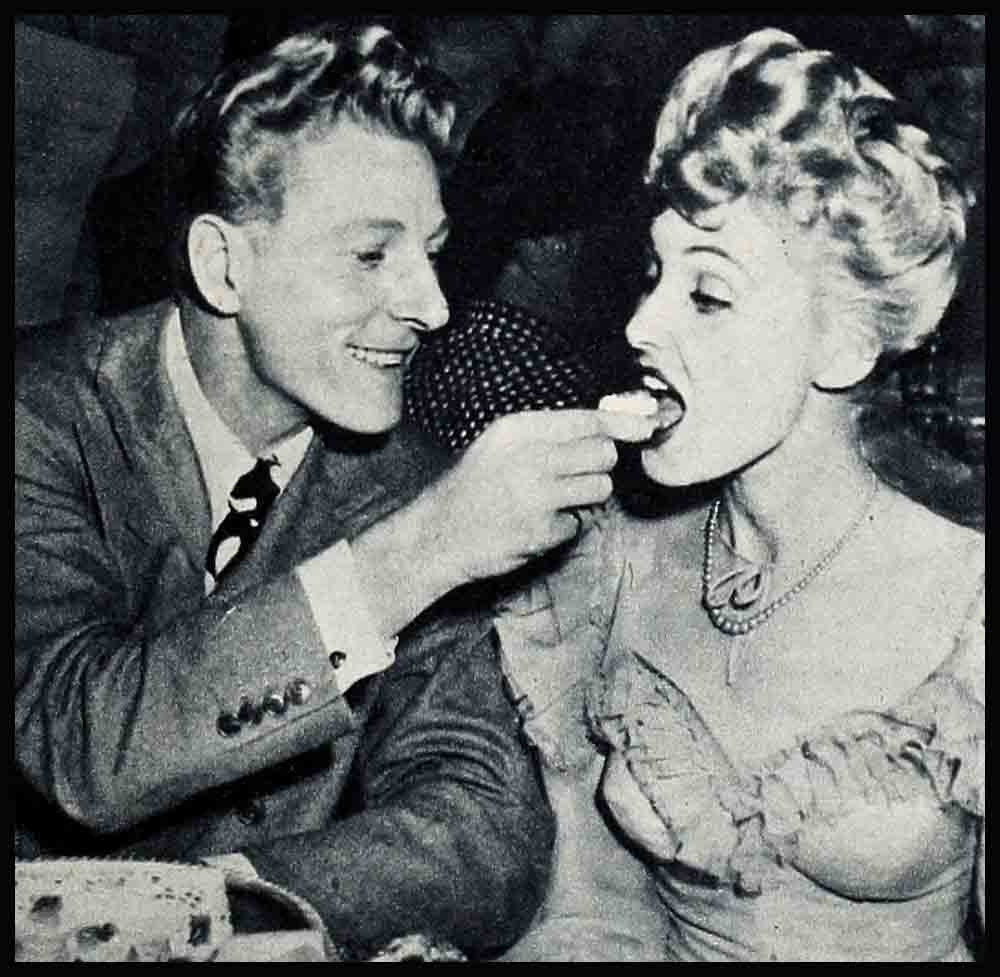
The Truth About The Stars’ Night Life
Stars shine at night—in night clubs!
After dark—in Hollywood’s famous rendezvous—the stars appear off guard. There you see them not through the imaginations of their press agents but as men and women possessing faults and frailties as well as greatness and glamour.
What the maitre d’hotels, captains, waiters, doormen, coatroom and cigarette girls and powder-room maids do not know about the stars, for instance, isn’t worth knowing. Through the eyes of the night club staffs, as well as from personal observation, Fearless gives you some revealing incidents which show you the stars as they really are. . . .
A favorite night club story tells of Bing and his wife, Dixie, when, in New York on a holiday, they dropped in at El Morocco. “How’s business?” Bing asked the girls selling War Bonds. They said it wasn’t very good. Bing thereupon announced he would sing a song for every Bond buyer. And he did, while the sales mounted, until he was so tired that when someone requested his theme song he couldn’t remember the lyrics.
Wherever Bing goes, whatever he does—with or without benefit of press agent—he has the wonderful habit of emerging, in his quiet, sincere way, quite a guy.
Night clubs frequently are the backdrop for dramatic and amusing vignettes. . . .
When Dorothy Lamour goes to the Stork she is showered with gifts and attentions from host Sherman Billingsley, who knew her when. Nine years ago Billingsley gave Dottie a job—to please her manager who reimbursed him every week for Dottie’s salary. Thus Billingsley and Dottie’s manager bolstered her fading courage and supplied her with the experience she needed to find her star brightly if scantily wrapped in a sarong.
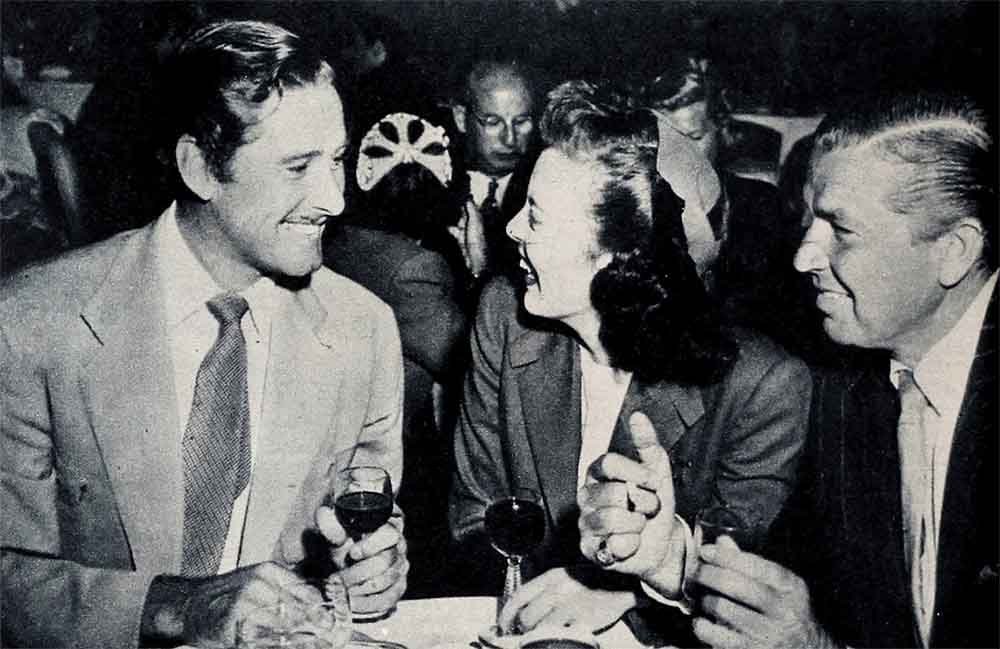
More often than you might think the stars find themselves the targets at which unpleasant, defensive people aim barbs. Recently an obnoxious gentleman standing beside Lieutenant Bruce Cabot at a bar asked, “Why aren’t you overseas fighting?” Bruce didn’t hit him—not physically anyhow. “I just came back from overseas,” he said quietly, “and I don’t remember seeing you there!”
There is the matter of tipping. One famous star tips sparingly and frequently pockets at least a dime or two from the tip her escort gives her for the powder-room maid. (She never has any change in her jeweled bag!) The other night, after seeing this star accept a dollar from her escort as a tip for the maid, a cigarette girl strolled into the powder room. “Just got a handsome tip, didn’t you?” she asked. “I got a quarter. How much did she get?” said the maid. Whereupon the maid and the cigarette girl had a good laugh. This particular star’s tricks are well known.
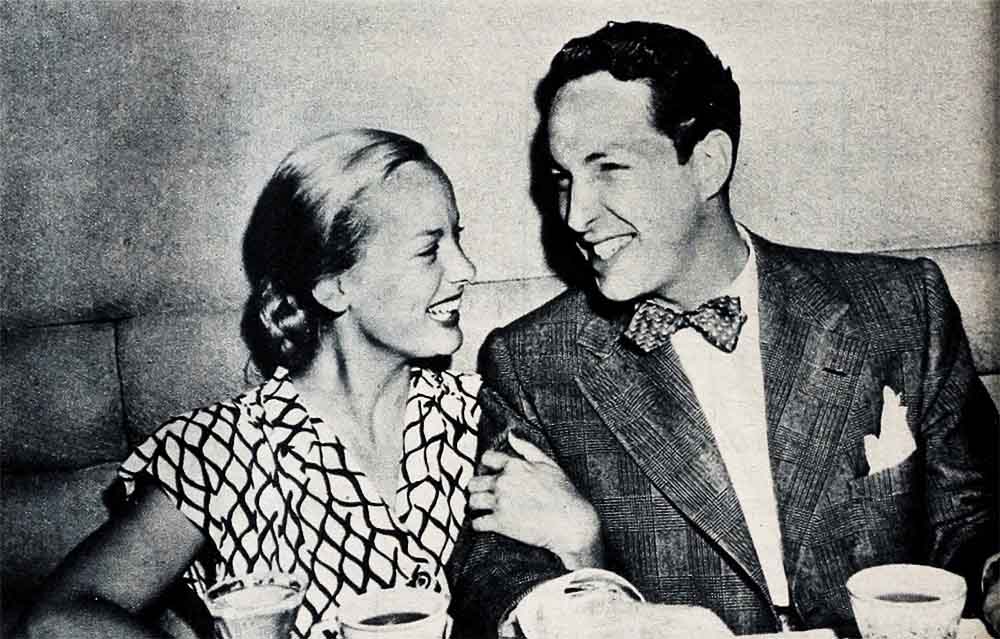
Among others who have a reputation for being poor tippers are Cary Grant, Sonja Henie, Basil Rathbone, Rudy Vallee, John Loder, Wallace Beery and Sonny Tufts. It is, however, Mrs. Sonny who holds the purse strings.
Good tippers—usually those who make few demands—are Greer Garson, Fred MacMurray, Joan Crawford, Phil Terry, Edward Amold, Walter Pidgeon, Frank Morgan, George Brent and Herbert Marshall.
Mrs. Herbert Marshall, however, knows exactly what she wants and how she wants it. She insists the meat—usually English roast beef—be a certain cut, the mashed potatoes very thick, the toast thin. Bart never opens his mouth.
Chester Morris is another generous tipper. The personnel of night clubs admire him no end. He entertains them as well as his guests with his card tricks and jokes.
George Raft, probably the most generous tipper of all, can be found almost any night, with his girl of the moment, where the steaks are thickest, where the music is hottest, and where Scotch comes at a dollar a drink. George himself, however, drinks nothing stronger than coke. He sends champagne to friends to bring his bill up to what it should be.
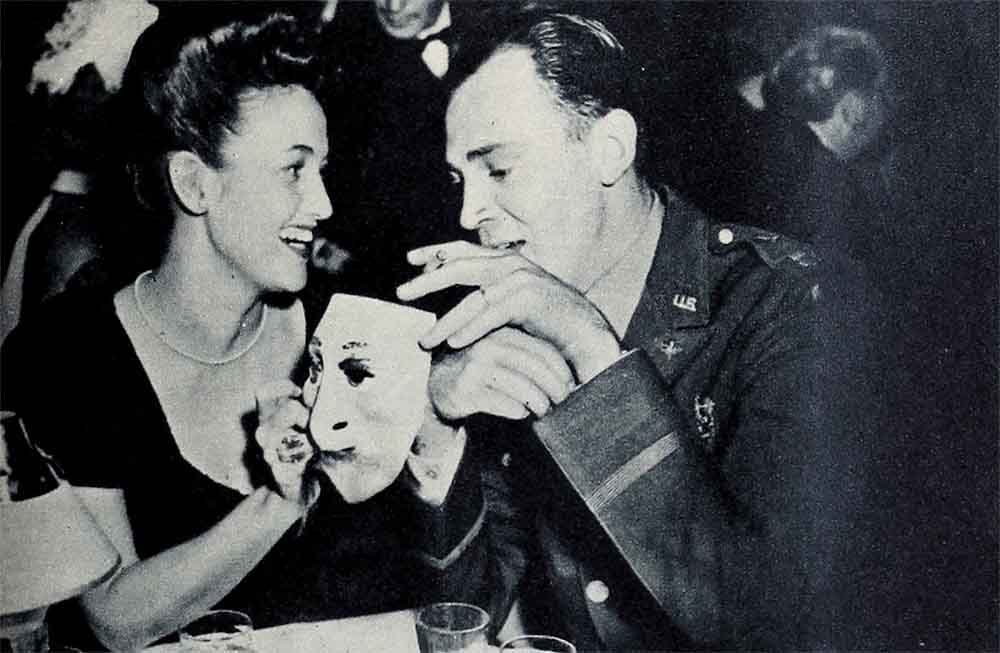
Needless to say, the stars’ preferences in food, drink and entertainment are well known to astute maitre d’hotels everywhere. . . .
Bette Davis goes ga-ga over a plate of frankfurters. . . .
Humphrey Bogart likes Martinis and beer and will play the bull fiddle when he’s feeling good. . . .
Bonita Granville enjoys spaghetti with butter and cheese and cokes with a dash of cinnamon. . . .
Fred MacMurray favors pot roast, sauerkraut and pork. . . .
Hedy Lamarr, indifferent about food generally, enjoys boiled and fried eggs and lots of milk. . . .
Paul Henreid often dines in sport clothes and slippers and likes cocktails, steak and scrambled eggs and bacon. . . .
Ingrid Bergman favors com on the cob and big steaks; also oriental food and soft lights. She hates waltzes and loves Latin rhythms. . . .
Simone Simon’s French is not so good when ordering in that language, waiters claim. . . .
Danny Kaye, a big eater, dislikes steak but is mad for chicken. Lucky guy in these days. . . .
Sonja Henie eats pheasant with her fingers; but she is no connoisseur of food. . . .
Susanna Foster goes for watermelon, thick steaks and Italian spaghetti. . . .
Rita Hayworth nibbles at her food and prefers to be up and dancing, especially the rumba and tango. . . .

Carole Landis, according to waiters, is a terrific eater. . . .
Sometimes night clubs are milestones in the success stories of the stars. When the lovely Coq Rouge in New York was decorated about twelve years ago, Cary Grant worked for a dollar a day filling in the paint in the frogs in the murals.
Speaking of murals, El Boracchio has a Kiss Room. Visiting celebrities are asked to imprint a kiss on a card and sign it. The card then is pasted up.
All movie stars—whether they are the “lens hounds” who go to night clubs mainly to be seen, photographed and itemed in columns or whether they go for the food and dancing and fun—know the importance of posing prettily. Stars try to hide wrinkles by turning their heads at flattering angles, by wearing large hats or affecting veils. Some, like Mary Pickford, frankly ask the camera boys to retouch their pictures.
Baldish men also have a problem. They must be alert not to be caught without hat or toupee. Bing Crosby takes great care not to be snapped with a shiny top. Brian Aherne and Charles Boyer don’t much care. Xavier Cugat never used to worry how he was photographed. But now that he is in pictures, his manager is trying to retrieve the old pictures which show him minus hair.
K. T. Stevens loves to be photographed and will pose all over the place. So will Maria Montez, Gloria De Haven, Lupe Velez and Helmut Dantine.
June Farrell, a newcomer, has endeared herself to night club staffs and habitues because she is so generous spirited. When service men mistake her for Dolores Moran and ask for an autograph she signs “Dolores Moran” rather than disillusion the boys—even though this doesn’t advance her one little bit.
Arlene Judge has a favorite gag which is most welcome to the recipients. She likes to send out food. Her friends frequently answer their doorbell to find a messenger from the night club where Arlene is dining—be it Mocambo, Ciro’s or the Troc—bearing a bowl of iced caviar, a boned squab, frogs’ legs, or a chafing dish of lobster in absinthe sauce.
Down at the Village Barn in New York they like to tell how Jane Withers celebrated her eighteenth birthday there, participated in all the robust country games and was the only girl strong enough to carry her boy escort on her back in the pickaback game.
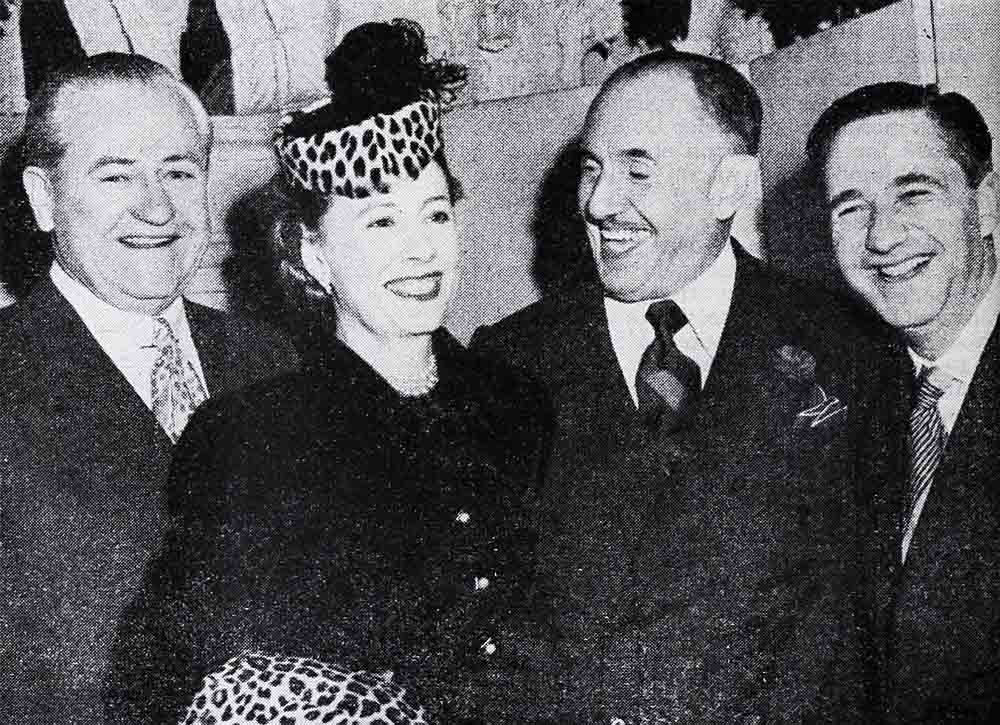
Faye Emerson flabbergasted everyone in the crowded Mocambo by suddenly getting up from her chair at a ringside table, balancing a glass of champagne on her pretty head and walking across the floor and back while the customers made excited bets whether or not she’d spill it. P. S. She didn’t. She just wanted to prove she could do it.
Frank Sinatra, in New York, spends much time at the famous Toots Shor’s. Shor, a devoted friend of Frankie’s and a famous kidder, bawled Frank out the other day. “I don’t care if you never come back to my restaurant,” he yelled after him. “You’re so skinny you’re no advertisement for the place!”
It was the staff of a Hollywood night club that saw Lana Turner and Steve Crane fail in love the same night they met. “The band’s playing my favorite song, ‘Tangerine,’ ” Steve told Lana. “Will you dance?” At three o’clock in the morning— they’d danced the whole night through—Steve proposed while they were dancing to “I Realize Now.”
It wasn’t too long after Lana and Steve’s second elopement that the staff of Bob Daltons, an attractive steak house, knew all was over. They saw Steve wait hours for Lana to return after she walked out following a quarrel. And she never did come back.
Now, of course, it’s Turhan Bey and Lana who dine a deux, usually not at the fancy places, however. Since they are a sensational looking pair, easily recognized, they prefer the quiet places where they have a better chance of being left to themselves.
Whenever Lana visits Copacabana, Manager Jack Entratter pretends he won’t let her in unless she’s wearing a sweater; even keeps one on hand for her.
Ann Sheridan’s romance with publicist Steve Hannagan, has flourished largely at the Stork Club. . . .
Bob Hope met his wife Dolores when she sang in a night club. . . .
Judy Garland and Dave Rose spent many hand-holding nights before and after marriage, in late spots. Their favorite tune was “Embraceable You,” which Judy still sings at every opportunity. . . .
Gene Tierney and Oleg Cassini did most of their courting at Mocambo where, night after night, they danced cheek-to-cheek. They’re still doing it. And no wonder. Oleg dances marvelously. . . .
Press agents sometimes use night clubs as a stage upon which to present “romances.” If a press agent wants to build up a starlet he dresses her up smartly, gets her an escort more important than she is, if possible, and sends the two to a night club that has a press agent, a photographer and is a hangout for newspapermen Press agents also pay kids fifty cents or even a dollar at such times to wait outside and ask the starlet for her autograph Juveniles, of course, are built up in the same way in reverse.
Stars who are publicity conscious also “date” at night clubs. George Jessel, who arrived at Mocambo one night with a pretty little starlet, tipped the captain five dollar; and asked that photographers be sent to their table. “This little girl is going to be a big star in a few months,” Georgie confided to everyone. Then Lois Andrews George’s ex-wife for whom he was torching, came in and was shown a table nearby. George promptly asked for his check and vanished. The young starlet who he had insisted was destined for great things has not been heard of since.
Errol Flynn, because of his devotion to fisticuffs, is the subject of some of the best yarns the late spots yield. Favorite among these tells of the night Errol was dining at El Morocco. And very quiet and circumspect he was too until another guest began badgering him. Finally, having had enough and more, Errol challenged, “Come on outside!” They went to the street where Errol, swinging his famous right jab, missed his accuser and caught a deb emerging from El Morocco straight in the eye. She passed out cold.
Errol rushed her into the club kitchen, applied about twenty red points worth of choice sirloin to her eye and hurried off to find a doctor.
When he returned the deb was conscious and the sirloin was gone. He asked what had happened to it. “I ate it,” she told him. “I’ve been mad for raw meat ever since I was a child.”
No newspaper published this story because no reporter believed it. It happens, however, to be true. The deb is still a steady patron of El Morocco and an ardent Flynn fan. Would you be, under those circumstances?
No doubt about it . . . Maitre d’hotels, captains, waiters, among others, know the truth about the stars. They see the stars shine at night in night clubs. And sometimes their star-dust comes off!
THE END
It is a quote. PHOTOPLAY MAGAZINE FEBRUARY 1945


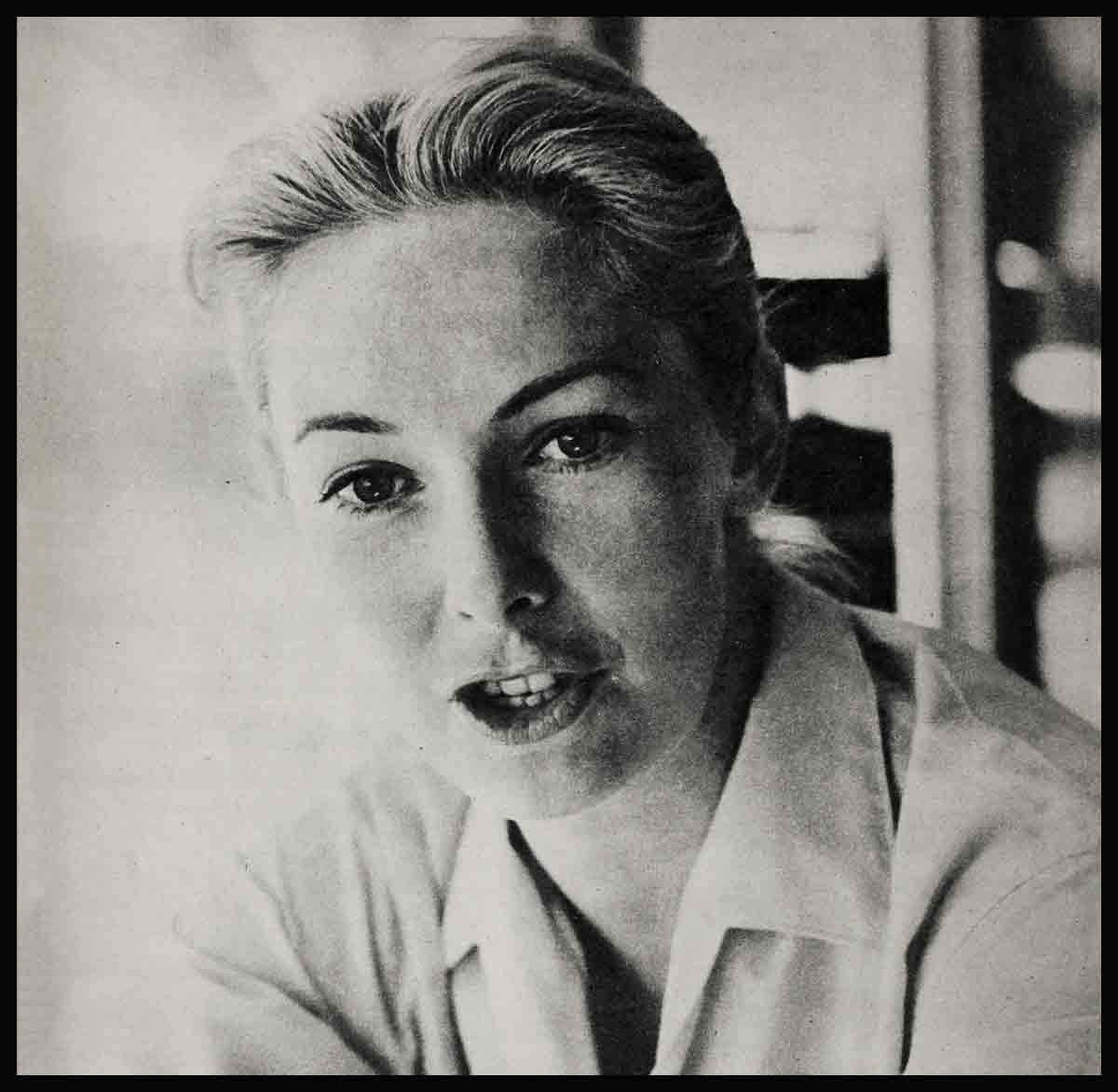

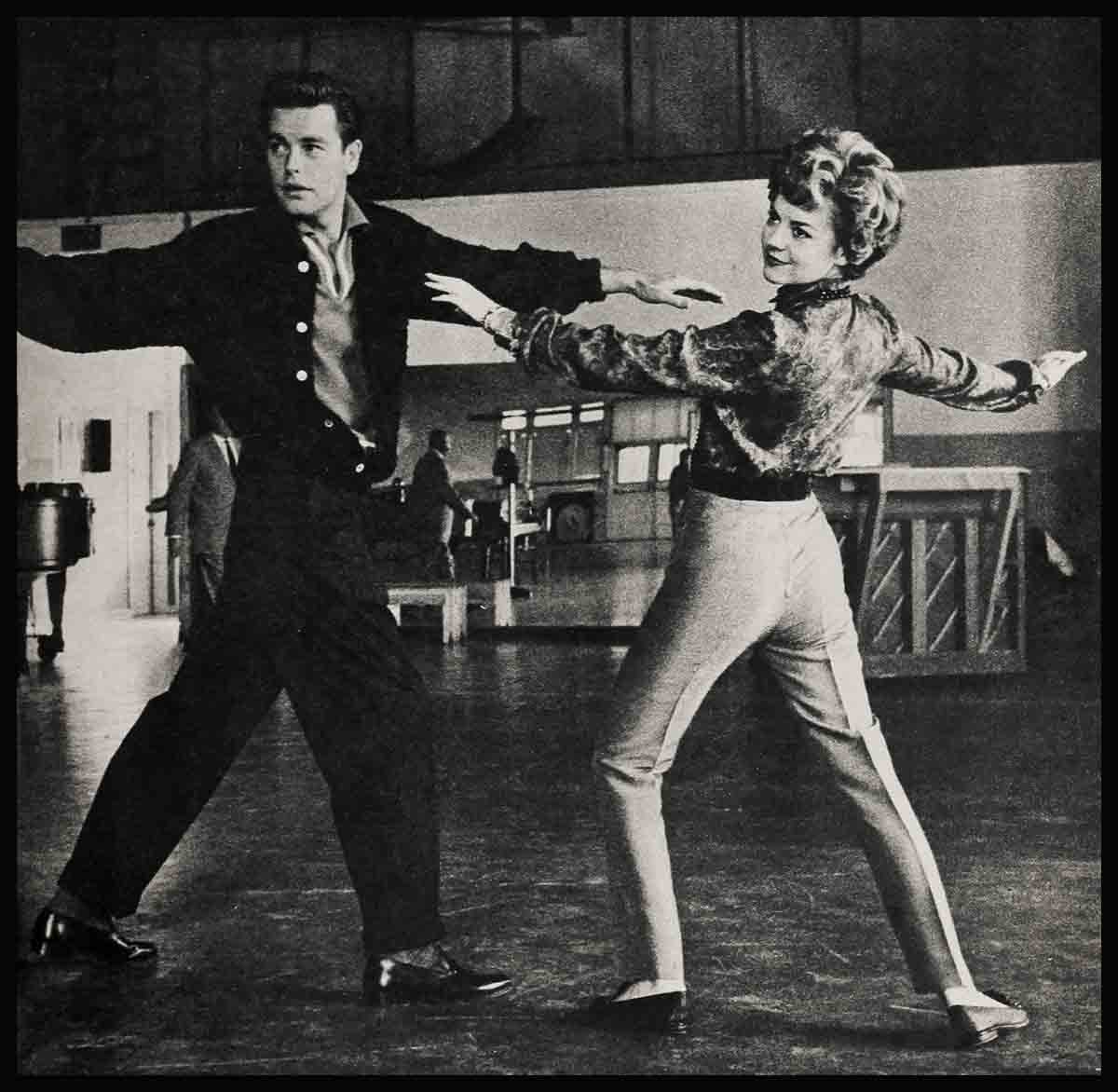
No Comments